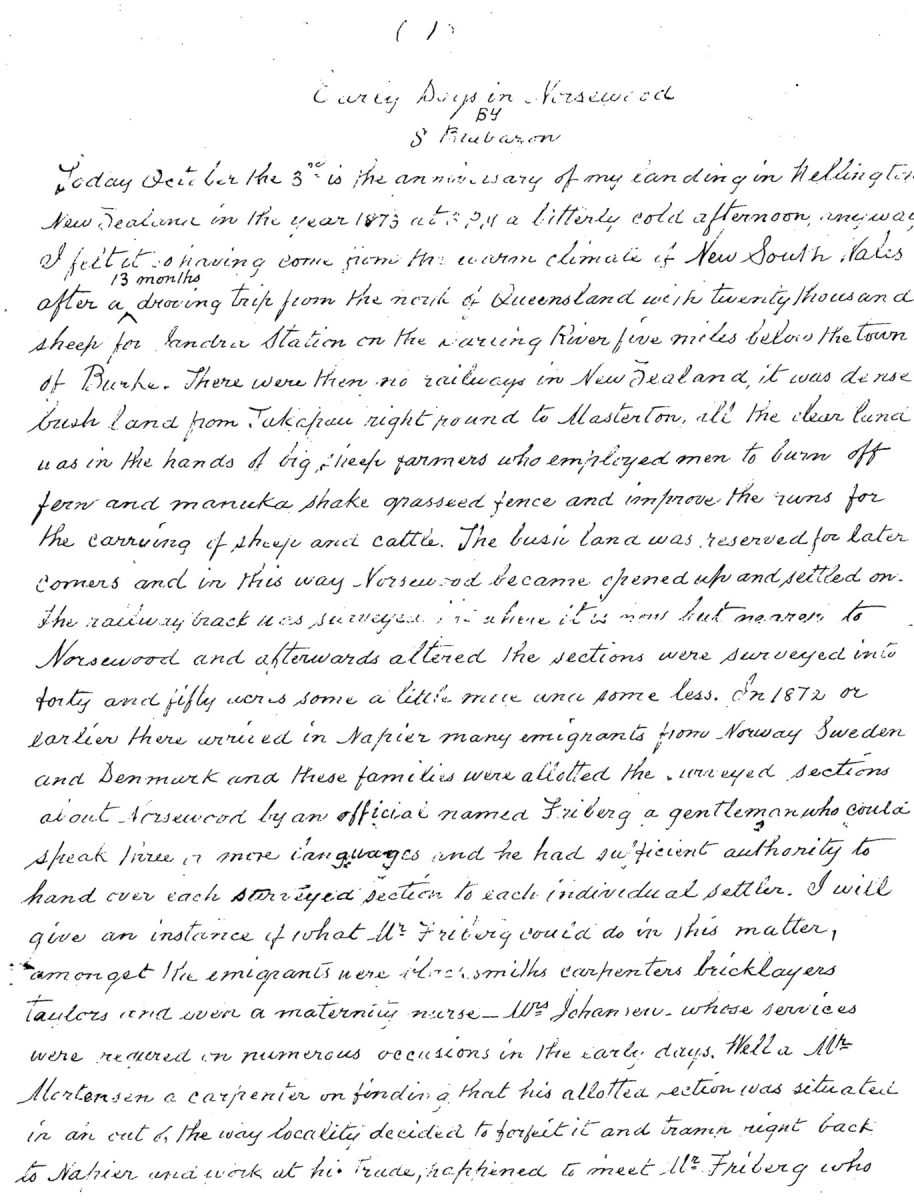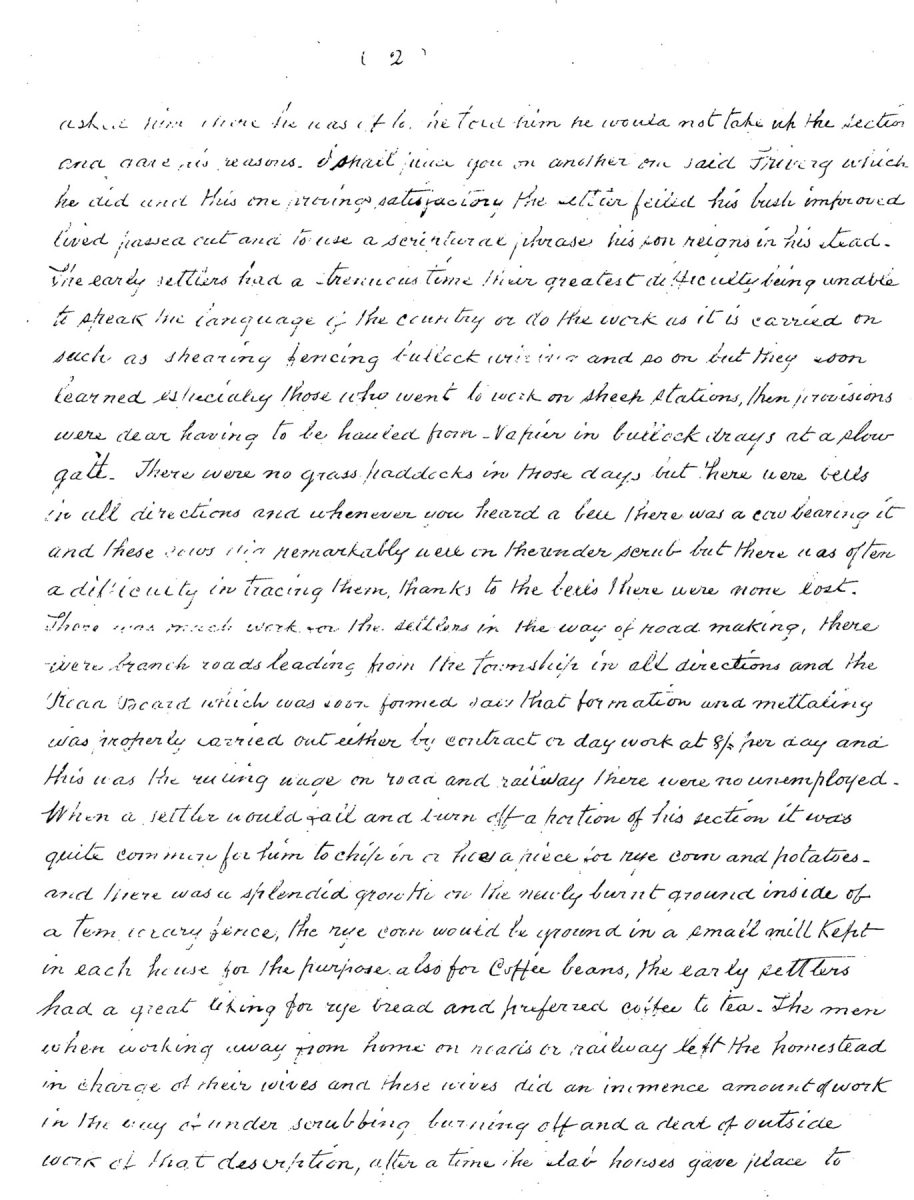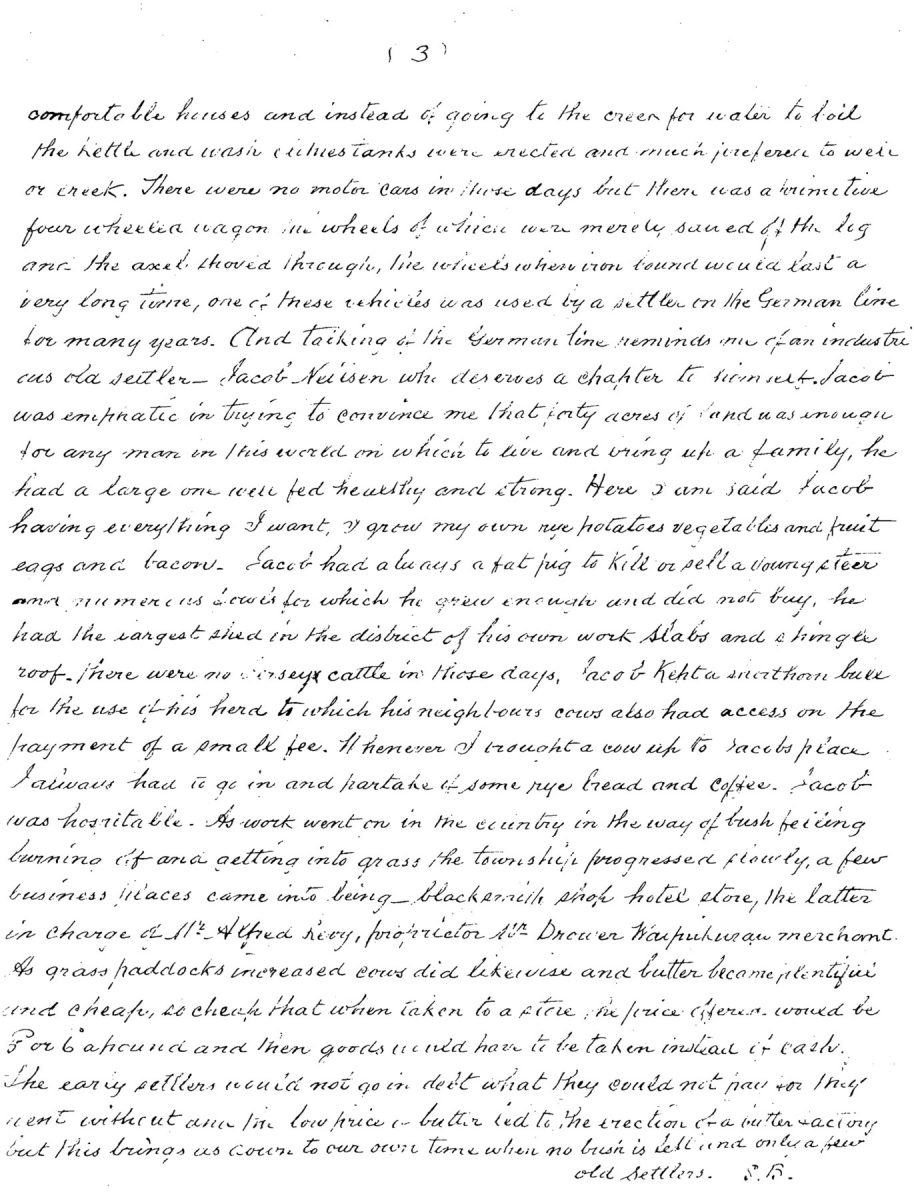Page 3
comfortable houses and instead of going to the creek for water to boil the kettle and wash dishes tanks were erected and much preferred to well or creek. There were no motor cars in those days but there was a primitive four wheeled wagon the wheels of which were merely sawed off the log and the axel shoved through, the wheels when iron bound would last a very long time, one of these vehicles was used by a settler on the German line for many years. And talking of the German line reminds me of an industrious old settler – Jacob Neilsen who deserves a chapter to himself. Jacob was emphatic in trying to convince me that forty acres of land was enough for any man in this world on which to live and bring up a family, he had a large one well fed healthy and strong. Here I am said Jacob having everything I want, I grow my own rye potatoes vegetables and fruit eggs and bacon. Jacob had always a fat pig to kill or sell a young steer and numerous fowls for which he grew enough and did not buy, he had the largest shed in the district of his own work. Slabs and shingle roof. There were no Jersey cattle in those days. Jacob kept a shorthorn bull for the use of his herd to which his neighbours cows also had access of the payment of a small fee. Whenever I brought a cow up to Jacob’s place I always had to go in and partake of some rye bread and coffee. Jacob was hospitable. As work went on in the country in the way of bush felling burning off and getting into grass the township progressed slowly a few business places came into being – blacksmith shop hotel store, the latter in charge of Mr Alfred Levy, proprietor Mr Drower Waipukurau merchant.
As grass paddocks increased cows did likewise and butter became plentiful and cheap, so cheap that when taken to a store the price offered would be 5d or 6d a pound and then goods would have to be taken instead of cash.
The early settlers would not go in debt what they could not pay for they went without and the low price of butter led to the erection of a butter factory but this brings us down to our own time when no bush is left and only a few old settlers. S.B.














Do you know something about this record?
Please note we cannot verify the accuracy of any information posted by the community.